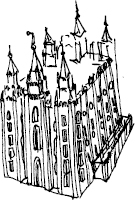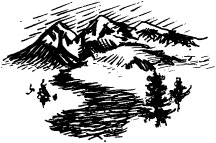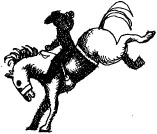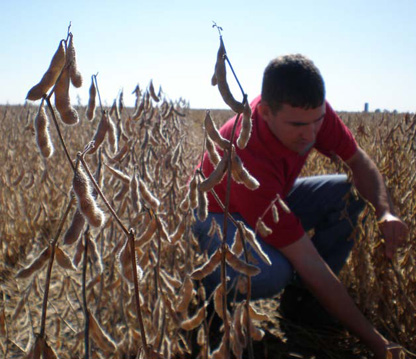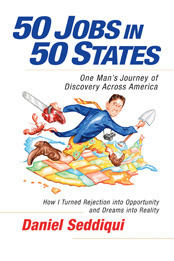
Download PDF Excerpt
Videos by Coauthors
Follow us on YouTube
Rights Information
50 Jobs in 50 States
One Man's Journey of Discovery Across America
Daniel Seddiqui (Author)
Publication date: 03/07/2011
Bestseller over 20,000+ copies sold
Working as everything from a cheesemaker in Wisconsin, a border patrol agent in Arizona and a meatpacker in Kansas to a lobsterman in Maine, a surfing instructor in Hawaii and a football coach in Alabama, Daniel chronicles how he adapted to the wildly differing people, cultures, and environments. From one week to the next he had no idea what he'd be doing, where he'd be sleeping, what he'd be eating, or how he'd be received. He even became a roving news item, appearing on CNN, Fox News, World News Tonight, MSNBC and the Today Show—which was good preparation for his stint as a TV weatherman.
Tackling challenge after challenge—overcoming anxiety about working four miles underground in a West Virginia coalmine, learning to walk on six-foot stilts (in a full Egyptian king costume) at an Florida amusement park, racing the clock as a pit-crew member at an Indiana racetrack –Daniel completed his journey a changed man. In this book he shares stories about the people he met, the lessons he learned and explains the five principles that kept him going.
Find out more about our Bulk Buyer Program
- 10-49: 20% discount
- 50-99: 35% discount
- 100-999: 38% discount
- 1000-1999: 40% discount
- 2000+ Contact ( bookorders@bkpub.com )
Working as everything from a cheesemaker in Wisconsin, a border patrol agent in Arizona and a meatpacker in Kansas to a lobsterman in Maine, a surfing instructor in Hawaii and a football coach in Alabama, Daniel chronicles how he adapted to the wildly differing people, cultures, and environments. From one week to the next he had no idea what he'd be doing, where he'd be sleeping, what he'd be eating, or how he'd be received. He even became a roving news item, appearing on CNN, Fox News, World News Tonight, MSNBC and the Today Show—which was good preparation for his stint as a TV weatherman.
Tackling challenge after challenge—overcoming anxiety about working four miles underground in a West Virginia coalmine, learning to walk on six-foot stilts (in a full Egyptian king costume) at an Florida amusement park, racing the clock as a pit-crew member at an Indiana racetrack –Daniel completed his journey a changed man. In this book he shares stories about the people he met, the lessons he learned and explains the five principles that kept him going.
Daniel Seddiqui was born and raised in the Bay Area of Northern California. Throughout his life, Daniel has been an avid athlete, training and competing in cross country and track & field. In college, he was first recruited to participate in these sports by the University of Oregon, before transferring to compete for the University of Southern California, where he graduated with a B.A. in economics.
Upon earning his degree, Daniel struggled to find a job in his field and failed countless job interviews. After a year without luck, he decided to pursue his interest in sports and took a position as a volunteer coach at Northwestern University with the women's cross country team. The following year, he volunteered as a coach for the University of Virginia football team. In the meantime, Daniel struggled to make ends meet by taking odd jobs and working in retail, soon concluding, however, that he needed to find a more permanent career.
After having lived in various states and experiencing some of what our country has to offer, Daniel conceived the idea of working one job at a time for one week in every state. His goal was to learn about America by crossing borders and working alongside its people. He sought work representative of each state's culture and economy--at a theme park in Florida and as a surfing instructor in Hawaii, for example.
To turn his vision into reality, Daniel had to return to California first. There, he attempted to fund his project through sponsorships, but again met with constant rejection. So he decided to pursure his journey independently, settin gup fifty jobs in fifty states over fifty consecutive weeks.
Though Daniel's journey was initially publicized only through his personal web site and social networks, it gained national and international media attention as he proceeded, and millions followed him on his remarkable quest. He has been featured on World News Tonight, CNN, Fox News, The Today Show, MSNBC, National Public Radio, and in the New York Daily News and Los Angeles Times, and many others.
Since fulfilling his All-American resume, Daniel has been on a lecture tour, speaking at universities, conferences, and with organizations, inspiring others to pursue their own goals amid adversity. He has developed a college semester program that empowers students to make informed decisions about their course selections and future career paths by exposing them to a variety of authentic work experiences during an ""on the job"" summer college semester. Daniel is now based in Chicago, Illinois.
—Kelsey Timmerman, author of Where am I Wearing?
Chapter One: Reality Hits But No Turning Back
Utah: LDS Humanitarian Services Worker
Colorado: USGS Hydrologist
South Dakota: Rodeo Announcer
North Dakota: Cartographer
Minnesota: Medical Device Machinist
Iowa: Agronomist
Nebraska: Corn Farmer
Chapter Two: Hitting Rock Bottom and Rebounding
Wyoming: National Park Service Ranger
Montana: General Store Clerk
Idaho: Real Estate Agent
Washington: Marine Biologist
Chapter Three: Turning Obstacles into Openings
Oregon: Lumberjack
Nevada: Vegas Weddings Coordinator
Arizona: United States Border Patrol Agent
New Mexico: Landscape Architect
Kansas: Meatpacker
Chapter Four : Not Just about Me Anymore
Missouri: Boilermaker
Arkansas: Archaeologist
Oklahoma: Roustabout
Texas: Petroleum Engineer
Louisiana: Bartender
Mississippi: Dietitian
Chapter Five: Halfway Point Is Getting Rough
Wisconsin: Cheesemaker
Illinois: Transit Ticket Agent
Michigan: Auto Mechanic
Ohio: Meteorologist
Chapter Six: Hitting My Stride and Taking Control
Indiana: Racing Pit-Crew Member
Vermont: Sugarmaker
Kentucky: Horseman
Tennessee: Music Studio Technician
Alabama: High School Football Coach
Chapter Seven: Returning a Different Person
Georgia: Peanut Sheller
Florida: Theme Park Entertainer
Chapter Eight: New Curves and Bumps in the Road
South Carolina: Golf Caddie
North Carolina: Model and Modeling Agent
West Virginia: Coal Miner
Virginia: Monticello Gardner
Maryland: Seafood Restaurant Cook
Delaware: Incorporating Specialist
Chapter Nine: Adapting to New and Different Cultures
Pennsylvania: Amish Woodworker
New Jersey: Boys and Girls Club Counselor
New York: Internet Marketing Specialist
Chapter Ten: Hitting Curveballs
Rhode Island: Ambassador of Tourism
Connecticut: Insurance Broker
Massachusetts: Baseball Scout
New Hampshire: Political Party Worker
Maine: Lobsterman
Chapter Eleven: Finishing a Journey and Embarking on New Dreams
Alaska: Commercial Photographer
Hawaii: Surfing Instructor
California: Winery Cellar Master
Epilogue: A Lesson From America
About the Author
1 Reality Hits But No Turning Back
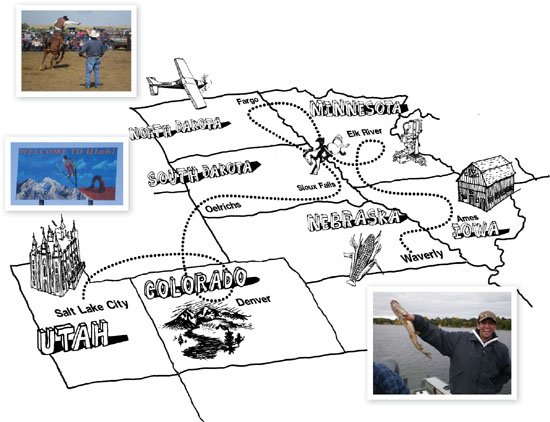
UTAH
LDS HUMANITARIAN SERVICES WORKER
As he handed me a check for $250, my dad made no effort to hide his doubt that I could complete my journey. “See you in three weeks,” he uttered skeptically. With tears in her eyes, my mom sprayed Windex across my car windows and promptly wiped the glass clean. Standing beside us, my brother videotaped my departure with the precious Sony camera I had purchased on credit just a few days earlier. I took two cases of water from my dad and put them on the floor of the car. With every move, my body shivered. Anticipating the journey ahead, I was shrouded in uncertainty. My throat choked up as though bricks were stacked from my stomach to my neck. I swallowed the emotion, climbed in my Jeep, and reversed out of the driveway.
This is it; no turning back. My mind raced as I repeated the words: No turning back. I was scared. I knew there was a chance I wouldn’t succeed, but I had flushed the possibility from my mind. Failure simply wasn’t an option, no matter what obstacles I encountered over the next fifty weeks. While I drove slowly through the familiar streets of my hometown toward the on-ramp of the highway — the on-ramp of my journey — the car was silent. I had turned off my cell phone. The radio was off. But my mind was rambling. Where am I going to end up tonight? Where will I eat? Do I have enough money to eat? Should I cash the check my dad gave me? Ambivalence hammered through my thoughts like static noise, and I needed to drown it out before it got the best of me.
It was a thousand miles to Salt Lake City; I was nervous and drove cautiously, trying not to let worry overwhelm me. I could not afford to have my car break down or get a ticket on top of the historically high price of gas. Before starting the climb over California’s High Sierra, I pulled over at a truck stop to stretch my legs. As I headed across the parking lot, I couldn’t help but notice all the different people passing through, ambling in and out of the rest room, walking to their cars. Lots of people live their lives on the road, I thought. Now I’m doing it, too. I was just starting out and had a long way to go — I knew I’d be crossing many borders. As I watched those around me, I realized that my anxiety came from anticipation of something entirely new, something I had never done before, but just because it was new to me didn’t mean it was wrong, unsafe, or foolish. A sense of calm and renewed confidence replaced my stress. Driving on, as I admired the scenery, I became preoccupied thinking about documenting my journey. I thought about the web site I had recently created, and I brainstormed topics for the first entry in my online journal. I was tempted to set up my camera and chronicle the picturesque ride. In the meantime, I looked forward to staying with relatives in Utah, whom I hadn’t seen in years.
To break up the drive, I decided to spend the night in Reno, Nevada. I parked the car near a university for the night and reluctantly crawled into my sleeping bag in the back of the Jeep. I had slept in the back of a car before, but this time, I was in an unfamiliar environment and was uncertain of the neighborhood just outside my car door. As I tried to sleep, Sasha called. “You’re sleeping in your car?” She was concerned, but also expressed criticism. “Why are you too cheap to get a motel?”
“I don’t have money for that; I need to save,” I explained, not for the first time.
“Well, have a good night. Call me tomorrow.” Much of the day, I was distracted by anxiety and anticipation, but as Sasha and I hung up, the noise of the day completely subsided. I was alone in a sleeping bag in the back of my car hoping all that I was putting myself through would be worth it. I locked my eyes shut to fall asleep, but every time a car passed, I popped up to check if it was a cop. I knew it was illegal to sleep in a car on the street within city limits, but I was desperate. The combination of anxiety and the chilly night air of the high desert kept me awake. After tossing and turning into the early hours of the morning, I decided to give up on sleep and start driving into the sunrise.
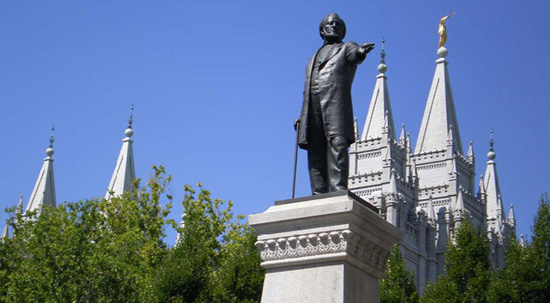
The statue of Brigham Young in front of the Mormon Temple.
“Welcome to Utah.” As the sign approached, I pulled over and stared contemplatively. I made it! This is real! State Number One, job Number One — working for the Church of Jesus Christ of Latter-Day Saints. Historically, Mormons had settled in Utah in the mid-1800s to escape the persecution they faced in other states. Given the Mormon influence, the decision to work for the LDS in that state was easy; landing an actual job, however, was close to impossible. The Mormon church typically prefers to hire Mormons. I wanted to avoid the question, “Are you a Mormon?” So I did everything I could to deflect it, answering questions conservatively and with extra courtesy. I didn’t want to give any reason that might hinder the possibility of getting a job, so I didn’t mention the objective of my trip. Ultimately, I settled for volunteering at the church’s Humanitarian Center. This was not my ideal choice — I didn’t know how I could make ends meet by working volunteer jobs. Still, I was eager to get started, both for the week and for the year ahead. I stayed with my Uncle Mike and his wife Linda, who provided a gentle buffer as I adjusted to my new life; I knew I’d be spending many nights of the year in the back of the Jeep or in a stranger’s house (if I was lucky), so staying with family was an ideal way to kick off the trip.
The Humanitarian Center is a warehouse located in an industrial part of Salt Lake City, which is nestled in the mountains. An associate was expecting me on my first day. “Thank you so much for donating your time. This is a great blessing,” she stated gratefully as she handed me meal cards. Wow, an all-you-can-eat buffet for lunch, I thought.
“Do you have vending machines here?” I asked, curious to address a stereotype of Mormons and caffeine.
“Yes, down the hall.”
“Do you have Coke?”
“Yes, we do!” the associate told me. I was surprised — I didn’t think Mormons drank Coca-Cola. I went down the hall to get a drink and check it out for myself, and sure enough, there were Cokes in the vending machine — but they were caffeine-free, which made me laugh to myself.
I was set for the week, but I needed to work hard — I needed to set the tone for my trip, my project, my conscience. I knew I would have to learn this job and all my jobs quickly if I was going to make the project worthwhile. I wanted, as much as possible, to be treated as a normal employee, not as a visitor. I looked around the facility and spotted a quote on the wall: “We are to feed the hungry, to clothe the naked, to provide for the widow, to dry up the tear of the orphan, to comfort the afflicted, whether in this Church, or in any other, or no church at all … .” I felt humbled by these words and motivated to make my best effort for their cause.
My task for the week was to package Hygiene Kits to send to Louisiana for victims of Hurricane Gustav. The Church planned to send out 500,000 kits, each containing a comb, toothbrush, toothpaste, towel, soap, and brochures from the church. Dressed to impress in their suits and neckties, each group of associates had a quota of kits to produce; if one team slowed down, another would have to pick up the slack. I tried to keep a fast pace, but it was tedious work; I noticed I wasn’t the only one glancing at the clock as the day wore on. Still, despite pressure to meet our quotas, all my coworkers appeared grateful to be working there. Only after I heard their stories, did I understand why. I was working side by side with refugees from Africa and Southeast Asia who were part of a program run by the church called “Developing Self-Reliance.” The program teaches English, provides job training, prepares participants for employment, and finally — after two years — offers them job placement.
Hearing what my coworkers had been through made me reflective and subdued. Preparing for my fifty-state odyssey, I had spent energy worrying about traveling alone, being far from home, working for weeks at a time, spending money, and the general unpredictability of the year ahead. Yet here was a group of people who had fled from war-torn countries and lived through tragedy I would never know. Their experiences reminded me of my dad’s family and their struggle under similar circumstances. Both had experienced corrupt governments, persecution, marginalization, and forced migration. At the Humanitarian Center, these refugees would work for two years. They had to make money for their families and acclimate to a new life — a new country, a new language, a new existence — completely foreign to anything they had ever known. We had come to this church in Utah for different reasons, though we both left home and were starting over. Nonetheless, I was humbled by the refugees. I knew the fear and concern I felt about the weeks ahead was nothing compared with what my fellow warehouse workers had been through. “We’re blessed every day. We accept whatever path God chooses for us,” one had explained. Despite our differences — and thanks to our similarities — I could relate. Whatever God chooses, I thought. No turning back.
COLORADO
USGS HYDROLOGIST
I decided to drive through Wyoming to get to Colorado, and soon after crossing the state line, the flat, colorless landscape changed to mountains and green meadows: the cloud covering dissolved as the sun blazed in the azure sky. Wyoming’s rocky terrain was overcome by enormous snow-covered mountain ranges and I wondered if every state would transform as swiftly when I entered. I wondered if I could transform that way, too.
As I approached Denver, I called Katie Thomas, a fellow USC alum, to let her know I was on my way. I found her through a college alumni network on Facebook. Though we’d never met, she was willing to let me crash on her couch for the week. When I arrived at her apartment an hour later, she had just returned from a 10K race. “There’s always some athletic event in this city,” she explained. When she took me to a city park to play football with her friends, I realized I was having trouble adjusting to the higher altitude: I had a bad headache and suffered shortness of breath. Still, I couldn’t help but notice the prominent bike lanes and throngs of joggers everywhere. Everyone seemed so active and energetic; I could understand why Denver is rated one of the healthiest cities in the U.S.
My first weekend in Colorado was relaxing and fun. The calm, pleasant atmosphere eased my transition and I was excited about the week ahead. Katie was welcoming, her apartment was comfortable, the scenery was beautiful, and I felt right at home in an active community of runners and outdoor sports. The concerns I had only a week earlier began to subside as I looked forward with relief and excitement to working as a hydrologist with the U.S. Geological Survey (USGS) at the Denver Federal Center. I had secured an internship with the agency after calling both private and federal organizations. Water is an essential life resource — we need it to live, it’s critical to irrigation, and it provides habitat for animals. To assure safe, clean water needed to survive, it’s vital to have information on water quality and composition. That’s where the USGS comes in. The agency works to protect us by studying water and providing scientific information others can use to purify and protect the water we consume.
I chose hydrology in Colorado because the state’s rivers, which originate in the Rocky Mountains, are a significant water source for much of the West. Half our country’s drinking water comes from rivers, and the other half comes from aquifers, which, like oil reserves, are underground. Once depleted, they are difficult to restore.
After a few days, I understood from experience at least one of the things hydrologists do: hike on trails with ski poles and water containers to collect water samples from reservoirs, canals, and rivers. Every morning, my colleagues and I put on waders (waterproof pants and boots) and life vests and drove deep into the mountains on some of the highest roads in the country. After driving as far as we could, we hiked in farther and waded into rivers to collect samples. It wasn’t that simple — the current was often so powerful, I was knocked off balance, nearly dropping the bottles and testing equipment. Once the samples were secured, we tested them on-site for oxygen content, turbidity, and pH before submitting them to water treatment centers. In addition to sampling, we measured discharge rates (flow volume). Taking samples was a long, monotonous process. To avoid contaminating them, we had to be very cautious, wearing rubber gloves and quickly securing the samples into Ziploc bags. Despite the tedious nature of the work, I loved trudging through the streams. I loved the cool air, warmth of the sun, and working outdoors. My coworkers were friendly, inviting, and informative, which made the job even more pleasant. One of the interesting things I learned from them is that when rain hits the surface of a river or other body of water, the chemistry of the water changes instantly. Jason, one of my colleagues, told me, “If you’re interested in hydrology to strike it rich, you’d be in the wrong profession.” It was clear: Everyone there was genuine and committed to ensuring the water we drink is clean and safe.
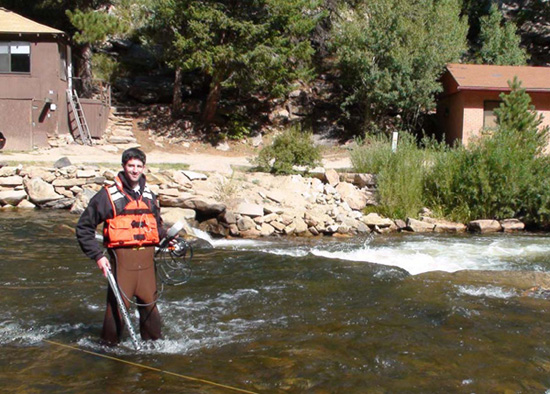
Carefully measuring the discharge rate every three feet, across the Big Thompson River.
I didn’t see Katie much because my work hours were so long (mostly due to the two-and-a-half-hour commute twice a day). I continued to have trouble sleeping — but this time, it was because my mind raced with excitement. I was in stimulation mode: Everything was new, interesting, invigorating. At night, I couldn’t wait for the next morning, to start over and take it all in again. Each evening, when I was preparing for the next day, I took a few minutes to catch up with my biggest fan: Sasha.
“What’s going on tomorrow?” she asked.
“Research in the watersheds!” I was excited — after only a few days as a hydrologist, I was scheduled to attend a national conference with all the experts. Everything was going better than I imagined, I told Sasha, with only one exception. “I’m really concerned about my web site,” I confessed. This was important to me because the web offered the best way to stay connected during my trip. I had been relying on my cousin to keep my site updated, but it had become stagnant.
“I can do it. I’ll even improve the layout for you.” Sasha volunteered, and I couldn’t have been happier. Problem solved; everything was smooth and steady.
The next day, as part of the conference, we went into the field to collect more samples. We took a shuttle bus 10,000 feet up a mountain, where we rendezvoused with a group of thirty hydrologists and climbed an additional 2,000 feet to conduct research near the summit. To avoid the risk of getting my camera wet from rain predicted that afternoon, I left it on the shuttle bus. When we returned to the bus after seven hours in the field, my camera was gone. Immediately, panic set in. The bus driver told me he had left it at the conference center. I was flabbergasted — the camera was a huge investment for me and though my year was just beginning, it already carried many memories I could not get back. When we returned to the center, I rampaged through the lobby searching hysterically. I spotted the camera sitting by itself on a table. I was shocked that it hadn’t been snatched up. From that moment on, it was attached to my body, no matter what. I couldn’t risk losing it again.
Despite that panic, I realized as I left Colorado that my anxiety about the weeks ahead had subsided. The shock of leaving home and of my new life on the road began to diminish. Nonetheless, though everything was going so smoothly, I didn’t want to get too comfortable too soon. There were many borders yet to cross. Just about everything about the year ahead remained uncertain; however, as time went on I was less afraid.
SOUTH DAKOTA RODEO ANNOUNCER
As I drove on Highway 20 into South Dakota, my father’s parting words still resounded in my mind: “See you in three weeks.” Entering South Dakota, I was starting my third week. Contrary to my father’s doubts, however, I was still going strong and had no intention of turning back.
On the road, I spotted a cowboy riding atop a galloping horse, which nicely signified the start of a week working at the rodeo. Before arriving, I had envisioned vast valleys with roaming buffalo and rodeos full of cowboys competing for glory. I wasn’t too far off — after making a few calls, I learned that rodeo is the state’s official sport.
I searched the Internet for information and found the South Dakota Rodeo Association. I called and was connected first with bull riders, but riding a bull was out of the question. Then I talked with the Association president, Dan Pirrung, who referred me to rodeo announcers, one of whom told me he would show me the ropes.
While I pulled off the exit into Oelrichs, the smallest of small towns (population: 145), I felt really far from home and I knew right away that I wasn’t going to fit in. I drove into the dusty parking lot, where hundreds of people wearing Wrangler jeans, button-up shirts, cowboy hats and boots crowded around trucks and horse trailers. My Jeep stood out from the other vehicles, and in my running shoes, T-shirt, and loose-fitting jeans, I knew I would stand out too.
I emerged from my car in search of Sugar Ray Quinn, the announcer who had invited me to Oelrichs and who was excited to be a part of my endeavor. As I walked bewildered through the parking lot, a man approached me and tipped his cowboy hat. As soon as he said “howdy,” I knew it was Sugar Ray. His smooth, robust voice was enough for me to recognize him; perhaps my running shoes — or lack of a cowboy hat — were all he needed to recognize me.
Sugar Ray took me to meet the judges, timers, and scorekeepers before he climbed a ladder into the announcer’s booth. Before long, I heard his velvet voice introduce me over the loudspeakers hanging from utility poles. He told the crowd about my 50/50/50 trek; as people turned to look at me, I could only smile and nod while some raised their eyebrows, some applauded, and a few gave me a thumbs up.
I became dazzled by people I met and the world around me. Above the rodeo arena, an enormous American flag rippled in the breeze, which carried the sound of twanging guitars as they came through the loudspeakers. From the shoulder of the highway overlooking the arena, a line of bikers peered down onto the cowboys standing around me. I realized there was a deep-rooted rivalry between them.
“Heya Cal-e-furnea, come on ova he-ere! Ima show ya how to wrassle a steer!” someone shouted suddenly, as I turned around to a handful of eager faces. But they weren’t watching me for amusement; instead, I sensed their genuine desire to share an experience that was central to their culture. I didn’t want to wrestle a steer … but there I was. This is it, I thought. This is what it’s all about.
The cowboys brought me to a pen and showed me how it’s done: Grab the steer from behind, grasp its horns, and dig your heels into the ground to slow it down. A twelve-year-old kid demonstrated the moves for me, but I just couldn’t get the hang of it. I grew frustrated and coached myself out of the failure. “Let’s do this!” I yelled as I chased the steer through the pen. Two other cowboys hopped in and together we got the steer to the ground. I felt a sense of both accomplishment and disbelief — it was surreal to think I was rolling around in poop chasing a steer with a bunch of cowboys. But soon enough, I would fit in easily.
“If yaw really gonna to do this, yal need ya-self some gear.” Bill White had approached me earlier and commended me for my mission. Now, however, he insisted on dressing me for the role. Nothing I said could convince him it wasn’t necessary. Before long, his wife showed up with boots, a belt, and five button-up shirts with fancy pearl clasps and detailed stitching. While I suited up, Bill described more of the rodeo to me — including what makes the animals buck. “There’s a flank strap attached,” he explained. It’s a common misconception that the animals are damaged or hurt during the rodeo, he elaborated; instead, what makes them buck is a loose strap tied around the midsection. The horses and bulls buck to try and remove the strap, and once the rider is off the animal, the strap quickly releases and they stop bucking.
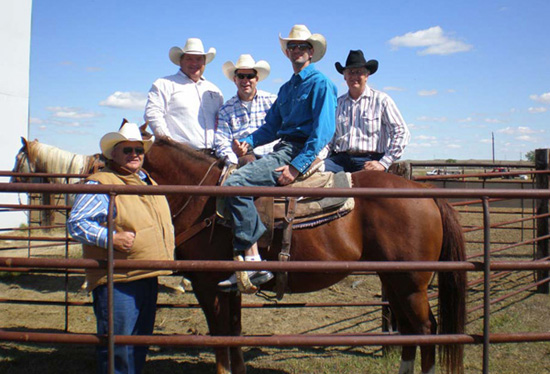
I was surprised their clothes fit me so well, although their tight Wranglers were loose on me.
As the first of two days of the rodeo ended and people vacated the lots, Sugar Ray came over. He, Bill, and some others were headed to Hot Springs, a nearby town, and invited me to join them at a motel there. I was reluctant to take them up on the offer — they had already given me food and clothes, and now they were offering a place to stay. Nonetheless, after driving through the few streets in town, I knew I had little choice. I needed a good rest for my rodeo debut the next day. That evening, they took me out to dinner and urged me to try a local dish: Rocky Mountain oysters. As I stabbed the meat with my fork and took a bite, Sugar Ray confessed that it wasn’t seafood. It was a local dish: bull’s testicle. Like so many others before me, I’m sure, I had been fooled, and reflexively spit out my food. We laughed about it, but when I went to bed, I was still grossed out.
All night, when I anticipated my role as an announcer, my heart felt as if it would pump out of my chest. Sugar Ray made it seem so natural and easy, but I was afraid of appearing in front of crowds and I knew I’d fumble over names, numbers, and times. My mind raced when I tried to think of things I could say as filler.
As it turned out, Sugar Ray had me announce the kids’ events: a three-barrel race, the youth steer-wrestling, and rodeo musical chairs. In that game, the kids circled a series of barrels on horseback, dismounted, and ran to vacant barrels instead of to empty chairs.
I spent the next two nights in Sugar Ray’s house, which is filled wall-to-wall with rodeo photos. Both nights, I was entertained by his impromptu voiceovers during the television commercials. To complete my work week in South Dakota, I needed to head across the state to Sioux Falls to meet Dan Pirrung. As president of the South Dakota Rodeo Association, he had invited me to the Sioux Falls County Fairgrounds, where the rodeo state finals take place.
When I arrived in Sioux Falls, instead of meeting the locals in their cowboy hats and Wrangler jeans, I was introduced to a group of men in orange jumpsuits. Dan explained that they were inmates at a Corrections Center, but were in for minor offenses. They had been released into Dan’s care for the day to help set up for the event. This source of labor kept the costs down for Dan and gave the men a chance to see something they loved. They were interested in my mission and coined a new nickname for me: fifty/fifty. Together, we spent the day preparing for the rodeo — assembling bleachers, unfolding gates, and spreading soil over the arena. That’s when I got the chance to try using the tractor.
The inmate operating it looked bored, as if he had used the tractor a million times, while I was itching for the chance to try something new. I climbed up on the massive machine, whose wheels were higher than my waist. As instructed, I turned the gears, and the machine took off, spreading soil beneath it as I rolled forward. I felt like I was sixteen, driving a car for the first time — only this vehicle felt much more compact and scary. I drove the tractor through the periphery of the rodeo, which was decorated with banners from sponsors. After hours of toiling to set up for the event, I sat on the bleachers scanning my GPS, wondering where I’d stay that night. As though reading my mind, one of the rodeo guys approached to ask if I needed a place to stay. His name was Steve Klein, and he looked like a real working cowboy. He was rugged looking and covered in dirt. He had a no-nonsense way of talking that was intimidating, if not for his gentle gaze. As he stood before me, dirtier than the convicts, I wondered if he lived in a rusted trailer or a scary shack. Still, my budget was tight and I longed for a place to sleep other than my Jeep, so I agreed to take him up on his offer.
I followed Steve north to a town called Crooks. He led me off of the pavement to a dirt road sandwiched between the main road and cornfields. With every passing mile, the houses became larger and more impressive until we reached a sign that read “Klein Ranches.” Within minutes, we approached a white, two-story farmhouse — Steve’s home. I was shocked. My stereotype of Steve, based on his grungy appearance that day, proved to be far off base. The Kleins, Steve, Debbie and their three adult children, gracious and welcoming, were happy to host me for the rest of the week, taking me to rodeo dances and horseback riding, serving steak dinners — I must have eaten a hundred steaks while I was in South Dakota — and driving me to and from the rodeo.
My duties at the state finals were the same as those at the rodeo in Oelrichs. I announced the same events as I had with Sugar Ray. Only now, I was alone, announcing before 3,000 spectators. This time, I didn’t feel like an outsider. I had acclimated to the rodeo culture and took it on as my own. Even a newscaster commended me, noting that I “walked, talked, and even looked like a real cowboy.” The important thing was: I felt like one.
I was sad to leave, but I needed to get on the road to my next destination, next-door North Dakota. It had been a great week and I knew my experience in South Dakota was irreplaceable. I had pushed my boundaries and sought experiences in a place completely foreign to me — experiences available only in South Dakota; I felt positive about my project and my ability to see it through to the end. I felt confident. I wasn’t yet ready to ride off into the sunset, and for that, I was thankful.

NORTH DAKOTA CARTOGRAPHER
I took off my cowboy hat, kicked off my boots, and threw them into the back of the Jeep before driving into my fourth state. I knew there was a historic rivalry between South Dakota and North Dakota and wondered how this might affect my two experiences. I was amused to learn that many residents of both states would prefer an east-west split, using the Missouri River as a boundary. Driving north, people stared at my license plates when they passed me on the road. I don’t think anyone expected a Californian to visit North Dakota, and I have to admit, I don’t think I would have ever gone there if not for my objective of hitting every state. Before setting out, I didn’t know much about North Dakota itself except how flat the land is. People had told me it’s so flat you could see the curve of the earth on the horizon. Even a sidewalk curb would be considered a hill in this state, I thought to myself as I made my way to Fargo, on the Minnesota border.
Fargo is the state’s largest city, and one of its biggest industries, as I learned from my research, is cartography — mapmaking. Many cartography companies are headquartered there, but I started my job search by pursuing positions in university cartography departments. I was advised that I would do better to work with a private company, where I could work in cartography full-time. My university contacts gave me a couple of leads, one for Ulteig Engineers, which hired me.
A friend from home had put me in touch with the Smiths, a family of four with two grown daughters, whom I planned to stay with while working in Fargo. I arrived at the Smiths’ house just in time for a steak dinner. The Smiths are proud to live and work in North Dakota and asked tons of questions about my trip and my week ahead. I had been planning to commute forty-six miles from their house to my job that week, but once I told them that, they insisted I stay with their relatives, the Jones family, who lived much closer.
The next morning, I drove straight to Ulteig, where my new boss, Mike, greeted me with the welcoming gift of a shirt, water bottle, and other company paraphernalia. “Here,” Mike said warmly in what sounded like a Canadian accent, “the marketing team got you this gift package,” as he handed me the bundle of goods. I knew North Dakota was competing with South Dakota, I thought to myself. After explaining the mapmaking process, he took me out of the office to have a look at the Red River Valley in which Fargo and surrounding towns lie. As I was soon to find out, the Red River plays a huge role in the lives of the people of that region and figures prominently in Ulteig’s business.
That evening, I drove to my temporary new home and met the Joneses. After I settled into my room in their spacious house, Mrs. Jones popped her head through the doorway to my bedroom: “Would you like to come to a small function with us and meet the Governor of North Dakota?” I wasn’t much into politics, but I knew this could be a great opportunity. Sure enough, Governor Hoeven was intrigued by my project and asked me to explain it to his guests. “What you’re doing is so important to understanding our country,” the governor said encouragingly. We were outside, and as people crowded around to hear about my project, swarms of mosquitoes surrounded us. One of the guests told me there are so many mosquitoes that people joke it’s their state bird. As the week progressed, I grew accustomed to mapmaking. I spent time working on a map of wind farms and planning potential sites for wind turbines. But we focused on floodplain mapping. Because the Red River Valley is so flat, the river itself so winding, which slows its flow, and because of melting snow in the spring, coupled with natural dams caused by ice breaking up downstream, water tends to back up, sometimes disastrously, causing major floods. The worst ones are the so-called hundred-year floods, which are, as their name suggests, uncommon, but still a 1% chance in a given year. Property owners need to know the exact elevation of their houses and businesses because elevation corresponds to risk. If they’re in a flood zone, they can reduce risk and avoid costly flood insurance by elevating their structures. Hence, the importance of reliable floodplain maps.
Growing up, I was always intrigued by maps and could lose myself in them for hours. Working with maps at Ulteig was fascinating, and when Mike suggested I make one of my route through the U.S., I was thrilled by the idea. Mike thought I could hand the maps out to people along the way so that they could track my progress. Forty-six more states …. My mind wandered as I created a basic map noting highways, rivers, and elevations. Later, Mike arranged for a pilot to fly me in a small plane as part of Ulteig’s effort to survey floodplain. I was nervous; I don’t like flying and we were in a cramped plane with winds howling at forty to fifty miles per hour. We had been advised against making the flight, but since I had only one opportunity to do it, we decided to take the chance. That’s what it’s all about, anyway, I assured myself while we flew over the valley. As we reviewed the flat land and potential sites for wind turbines, I couldn’t help but think of how far I’d come in four weeks. This is really happening, I repeated to myself. I had never imagined I would be in North Dakota flying over flatlands. I’m really doing it.
Toward the end of the week, I went to the YMCA to exercise and ended up chatting with the staff about my trip and my experience in Fargo. They looked up my web site and, impressed that I had been on the local news that week, asked to have pictures taken with me. After a brief photo session, I decided to head back to the Joneses. When I arrived, Mrs. Jones asked me about the photos I took at the YMCA.
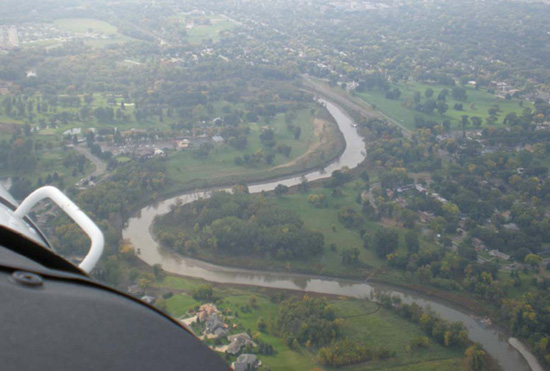
Flying high above the Red River Valley in a small plane. I couldn’t see the curve of the Earth although some had said I would.
“How did you know about that?” I asked.
“One of the girls’ mom called and said she heard that the fifty/ fifty guy is staying at my house,” she explained. Still I was confused, before I realized that the girl must have recognized my host from a picture on my web site, and then shown her mom. Mrs. Jones handed me the phone number of Stefanie, the girl in question, and urged me to call her. My coworkers at Ulteig were treating me to dinner that night, so I decided to invite Stefanie to join us. I found a new friend. I was happy to meet someone my age, and throughout the week we continued to hang out and build our friendship.
As I spoke to Sasha every evening and told her about my day, I sensed her envy that I was friends with Stefanie — but it wasn’t just Stefanie. Sasha seemed to grow jealous from any attention I got from other girls and would ask me about them with sarcasm. I didn’t want to upset her, but I wanted to make the most of my experience. I was walking on eggshells with Sasha.
Unfortunately, I did not feel I could be open about my friendship with Stefanie, who even helped me find a place to stay the following week. She had bragged to her relatives in Minnesota that she had met me and they volunteered to host me for my week there. I wasn’t sure how close my job in Minnesota would be to their house, but I didn’t hesitate to accept. My time in North Dakota came to an end, but I was invited to spend the weekend with the Smiths at their Minnesota lake house, and I looked forward to the short break en route to the next stop.

MINNESOTA MEDICAL DEVICE MACHINIST
I spent my first weekend in Minnesota at the Smiths’ log cabin on one of the 10,000 lakes for which the state is famous and where I experienced my first autumn foliage. It was the beginning of October, and I had never seen the vibrant orange or blazing red leaves of a northern autumn (most of California lacks such displays). I wondered if it was the most beautiful thing I’d ever seen. From there, I made the drive into the town of Becker to stay with Stefanie’s relatives, the Millers. I felt at home with them right away. Al and Margie Miller had three kids, and within hours, it was as though I had two new parents and three new siblings. They showed me around the house, gave me a key to the front door, and invited me to join them in their activities that week. I was still getting used to staying with family hosts, and it really helped to feel right at home from the beginning. To make the start of my Minnesota week even better, against all odds, my job was only ten miles away, in Elk River.
Minnesota is the leading medical device manufacturing state, so I applied to several companies before I nailed a job at Metal Craft, a family-owned company that grew from a basement operation in the 1970s into a multimillion-dollar empire. Metal Craft is a leading supplier of medical-implants and -devices.
When I arrived the first day, I was greeted by Shawn, the marketing manager. He showed me around the offices in the front of the building and then brought me to the manufacturing facility in the back. “What would you like to focus on for the week?” he asked.
“I want to try everything!” I exclaimed.
“Ah, you betcha!” Shawn replied, and with that, he made it happen for me. We set an agenda designed to give me a feel for the whole operation, day by day. Unlike the other machinists, who worked at a single station, I was scheduled to try all the stations required to make a particular product from start to finish. I experienced the whole process in five days: milling, grinding, honing, polishing, and etching. I learned how the devices made at Metal Craft help real people in the real world walk again, ski again, dance, run, think, or eat again.
It meant a lot to me to take raw metal and see it through to a completed product. This work helped me understand the meaning of it all and how small parts fit together to create a larger whole. I couldn’t help but wonder if this insight had larger relevance to my trip. Perhaps on a personal level, I wouldn’t understand the meaning of my journey until I saw it through to the finish. Then I’d know what it meant and why it was important.
As I was thinking about these things, a man named Scott Groit approached me, introduced himself, and told me that he would serve as my mentor at Metal Craft. Like many employees at the company, Scott was a veteran; he had thirty years of machining under his belt. He walked me through the 24-hour operation — the entire, complex, intricate process of engineering. “The main thing to remember is that the person who wrote the code for the software assumes that all of this work is done in a perfect environment. They don’t account for the human element so much. They don’t account for human error. This is called ‘tolerance,’” he explained.
Metal Craft thought my project could bring publicity to the company and hired an outside media agency to make connections and work to get us on the national news. Everyday that week, we called the agency to see if it had found any news source willing to run my story while I was there, but each day, the reply was the same: no media attention. I decided to try to reach out on my own. I called all the Minneapolis news stations, radio stations, newspapers and the like, and finally, the day before my last, one of the most watched local stations came to Metal Craft to cover my story. Within hours, the Millers told me they saw me on CNN. My mom called to tell me she had just seen me on CNN too — the local story hit the wire, and CNN caught it and ran it two days in a row. I was thrilled! I immediately called Sasha. “This is amazing! I knew this would happen to you,” she assured me. After being on CNN, I realized that I didn’t need to have a television show to share my experience. I knew that I was a capable person and reaching the national spotlight was a great way to prove it. I had come a long way.
That week, Shawn did me the great honor of inviting me to my first-ever fishing experience. Once the bell rang for the lunch break, we went out to buy a license. I wasn’t as enthusiastic as he was because I didn’t know what to expect. While we were out on the boat, I looked up at the sky, picturing myself as a point on a map, thinking how far I had come. I felt a tug on my line within two minutes and caught a northern pike. I caught twelve fish that day, but didn’t realize I had to throw most of them back — the legal limit is three. I planned on preparing the fish for the Millers, to make dinner for them as thanks for their hospitality.
As the week came to a close, I was reluctant to leave. On my last day at Metal Craft, Shawn brought me to his office and presented me with a sign to affix to my car with my Living-the-Map logo. Earlier that week, I had mentioned to him in passing that I wanted to put the logo on the Jeep, and his design was exactly what I had envisioned. I never expected my colleagues to do that for me and was deeply moved. Together, we went outside to mount the sticker to my car. It was perfect. I came to know the meaning of “Minnesota Nice.”
I felt that Minnesota would be hard to beat — the Millers and Metal Craft had shown me unmatchable kindness. I hated saying goodbye, but later that afternoon, I made the rounds at Metal Craft and said farewell to as many people as I could. Before I could make it out the door, Shawn stopped me. “There’s one more thing I wanted to show you before you leave … .”
He led me into the cafeteria, where all the employees had gathered; Jack, the owner, stood in the middle and spoke briefly, thanking me for my efforts and wishing me well with my project. As I took the floor to speak, I looked around the room and knew I couldn’t adequately express my thanks, my thoughts, or my reflections on the whole experience. I was overwhelmed by their kindness, that they had taken me in and treated me as one of their own. Jack came over and handed me an envelope. A moment later, Scott followed. After everyone had filtered out of the room, I opened the envelopes.
Sitting wasn’t allowed on the manufacturing floor unless you’re on break. I wasn’t used to being on my feet all day, and my back ached as I was making medical drills.
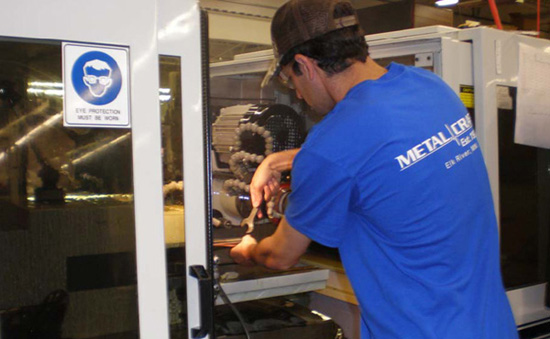
I had received two checks: a check from the company as payment for my work and a second check of personal contributions from my coworkers. The folks at Metal Craft had contributed out of their pockets to give me a lofty bonus for the journey ahead.
I choked up. Driving state to state, learning from people, going into their homes and experiencing their lives, I was humbled by how much they reached out. I felt I owed them for what they had done. As I got back on the road and drove south toward Iowa, I reflected on my Minnesota experience and thought, machining is a fitting metaphor for my project. You start with a plan, but as Scott said, the plan doesn’t account for the human element — the importance of others. However well thought out, the plan doesn’t envision the people you meet along the way or the difference they might make in your life. Since I left my parents’ driveway in California, all I could anticipate was related to myself — controlling my life, my decisions, my situations. But then there’s the human element — how influential, how necessary, how vital other people are. And that’s what makes the difference.
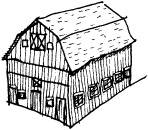
IOWA AGRONOMIST
I had become far too comfortable in Minnesota and was reluctant to leave and start all over. I realized how difficult it was to say goodbye to those I met and might never see again. Plus, I had nowhere to sleep in Iowa, which made crossing the border all the more nerve-wracking. After procrastinating through the weekend, I decided to take off for Iowa Sunday evening. Just as in North Dakota, I contacted universities to find work. This time, one of them took me up: First thing Monday morning, I was to start as an agronomist at Iowa State University in Ames, almost exactly in the center of the state.
Stopping at the “Welcome to Iowa” sign, I chuckled at the clever slogan: “Fields of Opportunities.” I knew I had made the right decision on a career choice in this state: Iowa’s soil is considered a state treasure — “Iowa’s black gold.” Iowa has the world’s richest and most fertile soil for farming and houses some of the world’s leading agronomy institutes. There are 88,600 farms and 11,000 different types of soil in the state. Ninety percent of Iowa is devoted to agriculture — it’s no wonder that it’s often considered a “flyover” state. I knew agronomy was the best option for the week, but I have to admit that driving through the “fields of opportunities” was painful. The smell of manure along the way was horrific. Though I kept the windows rolled up, the stench filled my car all the way to Ames. My uncertainty about this entire venture, which had subsided, came back to me as I drove through town. It was dark outside, the street lamps were dim, and the houses big and desolate. I didn’t recognize anything — there wasn’t a single familiar chain restaurant, grocery store, or gas station. Many buildings were shaped like barns. Since I would be working at Iowa State University, I tried to find a neighborhood nearby that appeared safe enough to park my car and sleep for the night. I wasn’t too picky, but I couldn’t find a spot where I felt comfortable. I drove downtown and still couldn’t find a place to park.
As drizzle turned to rain, a pit grew in my stomach. I didn’t feel safe, but I had no choice. I pulled over to shift my belongings to the front of my car and prepared the blankets in the back to make enough room to sleep diagonally in the back of my Jeep. Perhaps it was the lighting on the street or movement in the adjacent houses, but I got nervous and drove another block. This is it, I thought, I have no choice. As I made a cocoon of blankets in the back of the Jeep and closed my eyes, I felt lonely and deserted. “I hope you found somewhere safe to sleep tonight,” the Millers had texted me. Raindrops were pounding on the roof of my car like rocks falling from the sky. I can’t sleep through this, I thought as my mind raced again with anxiety. Would anyone recognize me if I told them who I am? Would anyone take me into their home if I knocked on their door? I knew it was silly, but I was feeling increasingly desperate. I also knew it was too late to look for a better place to sleep. I just had to deal with it, listen to the raindrops, and get through the night.
Needless to say, I could hardly await 9:00 a.m. to come around so I could start my sixth job. I was eager to meet with Jamie Benning, the research assistant who was to show me the ropes for the week. As soon as we introduced ourselves, Jamie sent me to the laboratory to process soil samples. It didn’t take long for the reality of the job to set in: It was tedious and I was alone. I was left by myself for hours, breaking up the soil with a sifter to the size required for accurate testing. I didn’t think anyone would even notice if I was gone. I really want to learn something. I wasn’t even sure why I was doing these tasks. The past five states had been smooth, fun, engaging, and here I was, alone in a lab doing monotonous work that I couldn’t even understand. I took off my lab coat and decided to go for a walk to clear my mind. As I sneaked out, Jamie caught me in the hallway.
“Uhh … I’m, uh, taking a break,” I told her.
“We’ll have you going out into the fields if the weather gets better by Wednesday,” she promised, sensing my disappointment. I couldn’t help but think about the rough night I had, and I asked Jamie if she knew where else I could stay. She sent a mass e-mail to see if any students were willing to host me, but by then it was late in the day and we received no response.
I endured another night of rain pounding on my car in the same scary neighborhood as the night before. The next morning, I was exhausted and desperately needed a shower. I looked for local gyms and upon finding one was able to convince a kid working the front desk to let me sneak in. I wished I could stay at the gym a few more hours — I wasn’t looking forward to going back to the lab.
Nonetheless, I resumed the menial tasks I had worked on the day before, only this time, I was joined by Charlie. He was an intern from Ecuador, and after chatting, he helped me find a place to stay the rest of the week. “People in Iowa are too nice for you to be spending nights in your car,” he explained. I wish I had known that when I was thinking of knocking on doors.
A few soybeans survive in a recently harvested field as Mark, ISU’s Extension Field Agronomist, examines the soil.
Charlie connected me with his friend, Aurelio, who also worked at the university. Aurelio opened his home to me and though he was busy made time to take me out to enjoy the nightlife of Ames. After staying with Aurelio, I felt rested and ready for the remainder of the week. The weather improved, so I finally had a chance to get out of the lab and drive an hour west of Ames, into the fields to analyze corn production. The plan was to work after dinner, at 1:00 p.m. “Shouldn’t we have lunch first?” I asked Mark, a field agronomist. He laughed, explaining that what most of the country calls “lunch” is called “dinner” in Iowa —“dinner” is called “supper” — and we proceeded to the only place nearby that served food, a bar. It dawned on me that if a town lacks a restaurant, it would at least have a bar as a place to eat — a potentially useful discovery. We ordered the only entree on the bar’s menu: Salisbury steak with peas and a slice of white bread. Talk about a monopoly, I thought.
When we walked out into the rows of corn, I felt nearly as lost as I had been all week in the lab. I became disoriented, so I was not too surprised when Mark told me he carries a compass to avoid getting lost in the cornfields. Thousands of cornstalks surrounded us, and to my surprise, each stalk carried only one ear of corn. As we paced through the maze, Mark instructed me to pay attention to the insects around us. He peeled open a cob and showed me nematodes burrowed into the corn. These pests can do significant damage if not controlled. My next task was to shove a three-foot probe into the dirt to retrieve soil samples. I realized that the work agronomists do, assessing the quality and fertility of the soil, is essential to cultivating crops on a large scale. At the start of the week, the work I did in the lab seemed monotonous and boring; I didn’t know the meaning of any of it, how it fit in to the bigger picture. After spending time in the field with Mark, it all began to make sense, and my indifference was replaced by appreciation for our country’s vast agricultural resources and those who cultivate and sustain them. I knew I could take this insight with me to Nebraska the following week where my next job was actual farming. I was relieved to be heading there, in large part because I would be staying with a friend, one fewer thing to worry about. And I was moving successfully into Week Seven.

NEBRASKA CORN FARMER
Driving into the Cornhusker State on a two-lane highway, I was only one car in a line of many slowly following a heavy tractor that seemed to be crawling to its destination. The tractor was so wide, no one could pass, and for miles I felt as if I were in a funeral procession. To pass time, I called Sasha.
“There’s something I want to talk to you about,” she stated aggressively.
“What’s going on?” I was nervous, but not alarmed.
“Not now, I’m with friends, we’ll talk later.” We hung up and my mind raced again. By now I was used to Sasha’s abrasive temperament, yet I couldn’t help but grow anxious as I wondered what I might have done wrong. I tried to flush the worry out of my mind and concentrate on the week ahead.
To finally arrive in Nebraska was surreal. From the outset, I planned this leg of my trip to coincide with Nebraska’s corn harvest. I knew that farming is the leading industry in the state — if anyone thinks that industry is dying, I can report otherwise. True, the number of farmers is decreasing, but every farmer who remains is responsible for more land than in the past.
I didn’t know how to contact farmers directly, so I arranged my Nebraska job through the Nebraska Corn Board Association, which referred me to Dave Nielsen, who owns hundreds of acres just outside Waverly, twenty miles from Lincoln. I planned to stay with my old Chicago roommate in Omaha. I was looking forward to spending time with him, but I wasn’t excited about the 65-mile commute.
Throughout that day, my mind wandered until I was able to speak to Sasha again and resolve her problem. “I don’t think we should talk anymore,” she remarked curtly.
“What do you mean?”
“I don’t feel like we can be friends, because you want something more, and we have nothing in common — there’s too much of a cultural difference.” Though I didn’t agree, I knew where she was coming from. Until her parents sent her to Atlanta for college, Sasha’s whole life had been with her family in the Middle East. As soon as school was over, she would return home. Her family would expect any man seriously involved with Sasha to return with her. In the past, Sasha had told me there was potential for us, but deep down we both knew I would never leave my family or my country to move to hers. Still, I didn’t want to let her go — not just because I had feelings for her but because she had become a great friend; after all, Sasha was the catalyst that gave me strength to embark on this journey.
I immediately tried to make Sasha change her mind, and after about twenty minutes, she agreed to keep talking to me. We had been through this before — she was hot and cold: Our friendship would be stable for a period and then she would try to end it, but I always convinced her not to. Still, we spoke every day, and I felt this latest declaration was just another episode. In any case, I certainly did not welcome the distraction; I needed to focus on my overall project, and more immediately, on farming in Nebraska.
The first few days were cold and rainy, so we couldn’t go out to the fields to harvest. Instead, I spent time with Farmer Dave in his kitchen discussing his yearly operation. “I’m not only a farmer,” he explained. “I also haul grain as a trucker, and I work as a financial planner, accountant, construction worker, and salesman. Working on the tractor is a very small part of the operation.”
Dave took me to the local John Deere store, where we hung out for a while and everyone seemed to know everyone else. We chitchatted with other local farmers. I was impressed by Dave’s knowledge — it was as if I was born yesterday and understood nothing. He knew things I’d never thought about, like the difference between sweet corn and feed corn. Dave even had a master’s degree in agriculture. In addition, he built pretty much everything on his farm himself, and he taught me to become a real handyman. “It’s more profitable if you’re able to do things yourself,” he explained.
Dave spoke openly about his family, his life, and growing up on the farmstead. I got the sense that he had a genuine desire to teach me what he did every day; he knew he was representing all farmers for my project, and I could tell he appreciated that.
Dave longed to get out to the crops and often repeated a popular Nebraska expression: “Wait five minutes and the weather will change.”
Dave was right. It took longer than five minutes, but the weather suddenly became warm and sunny. We didn’t waste any time and hauled 80,000 pounds of grain in his semitruck, passing endless farms, barns, silos, and water pivots on our way to grain elevators run by the local co-op. Before the co-op, AGP, paid for the grain, workers measured its moisture content, which had to be within 15 and 18 percent or Dave would be charged a penalty.
By the time we got to the fields, I understood everything Dave had explained earlier. His first order of business was to teach me to drive the auger cart, which catches the kernels dumped from the combine. “Do you know how to drive a tractor?” he asked.
“I learned in South Dakota,” I replied hesitantly, as I glanced at Dave’s complex machine, which was more elaborate than the one I had driven in South Dakota. I was afraid of appearing unmanly if Dave thought I wasn’t up to driving the tractor. So even though I didn’t know if I could operate his million-dollar machine, I decided to give it a whirl. Dave jumped into the combine and started harvesting the cornstalks while I drove alongside in the auger cart to catch the kernels. This is so country, I thought as I turned the radio on to a local country music station. At that moment, my dad called.
“How’s everything going?” he asked.
“I’m just harvesting corn in Nebraska. Have you ever worked on a farm?” I laughed. I knew the answer was no.
“Nobody does what you do,” he replied, alluding to my going against the grain, as it were.
Dave wanted to help me get some experience on a feedlot, so the following day, he arranged for me to work on one owned by Ron Raikes, a state senator. Ron knew I wasn’t prepared, having never been exposed to a feedlot before. He handed me a pair of rain boots for trekking through the mud, but I couldn’t tell the difference between the mud and the manure so I stepped indiscriminately in both. With my bare hands, I unloaded bales of hay, each weighing a hundred pounds, and dragged them to the feeding lines when I pulled them apart. I was constantly swatting flies off my skin and my arms were itchy and tired, my fingers aching. But despite this, I was completely distracted by the fact that I was in the middle of nowhere, completely isolated. I never saw this coming in my life, I thought to myself, breaking straws of hay in the middle of Nebraska. It was revitalizing, and I felt I was in a place that had somehow gone undiscovered by much of the rest of the country.
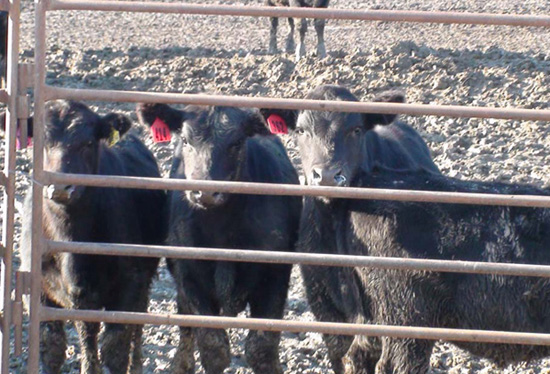
I think I know where the term “(cow)ard” came from. Every time I came close to the baby calves, they would run like the wind.
Ron had mentioned that he was expecting a shipment of five hundred calves, and I knew his shipment had arrived when I saw cattle trucks approaching. The calves, separated from their mothers, moaned loudly. They would stay on the feedlot until they got good and plump, after which, their next and final destination was the slaughterhouse. “Welcome to hell,” one of the farmers stated heartlessly, before spitting on one of the calves. I was overwhelmed. An hour later, Ron offered to take me out for a hamburger. Though I felt compassion for the calves, I couldn’t help myself and joined him for the meal.
When I went out to lunch with Senator/Farmer Ron, a stranger came up to our booth in the diner and leaned on my chair as if he had known me for twenty years. He didn’t have to be anywhere, he explained, because his land was too muddy to harvest. So he hung out with us and talked nonstop. I realized that farmers love



